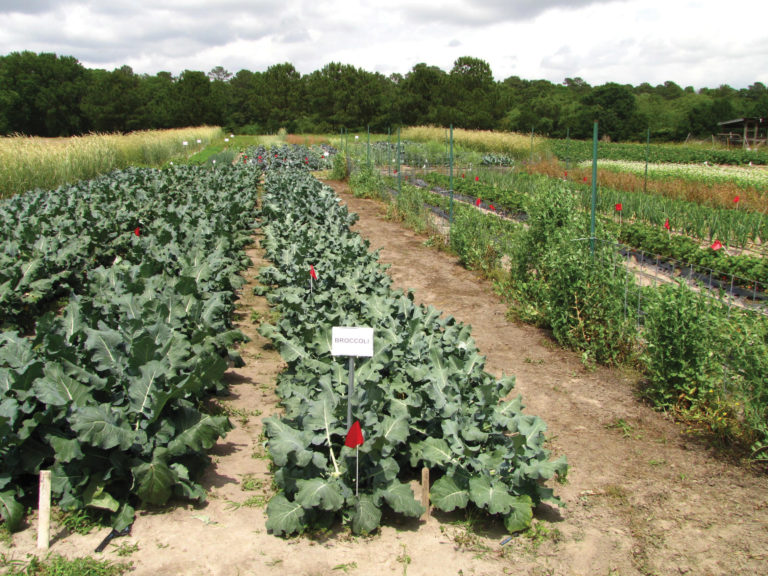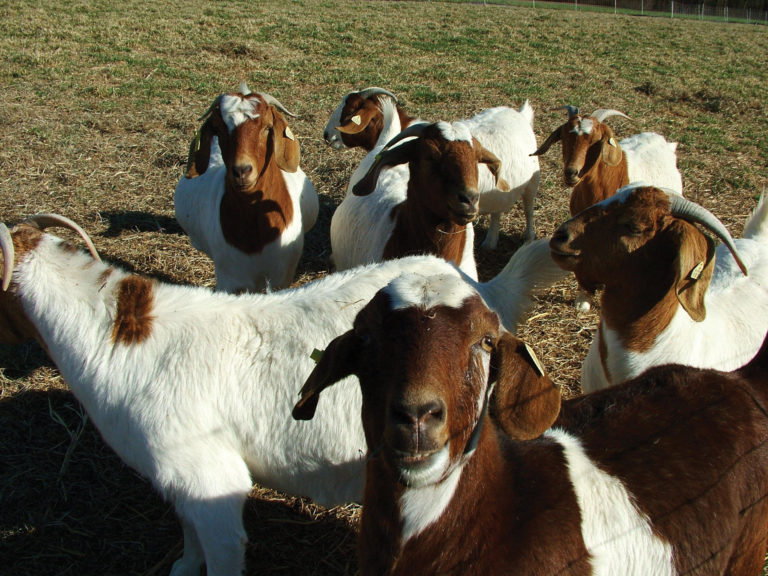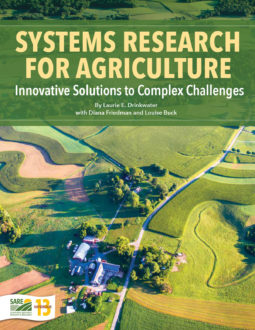
The Center for Environmental Farming Systems (CEFS) in Goldsboro, North Carolina, thrives in large part because it represents a unique partnership between two land-grant universities and the North Carolina Department of Agriculture (NCDA). An outbreak of a noxious weed showed that these types of social relationships can be complex but that truly collaborative approaches can provide alternative paths not easily accessed in more traditional research settings.
In 2000, the discovery of tropical spiderwort at the Cherry Research Farm, where CEFS is located, alarmed local producers who insisted that the entire farm be fumigated. Officials from the NCDA, which owns the Cherry Research Farm and has a politically appointed leader, felt obliged to listen.
CEFS researchers, however, knew that fumigation would pose a major setback to their work, which included a number of long-standing, systems-based research projects focused on soil changes. As an alternative, they proposed keeping the weed in check by using a scouting program, adjusting crop rotations to discourage its growth and conducting inspections of equipment entering and leaving the farm. The approach worked, highlighting the value of working together to identify new solutions to old problems.
“Coming together to think through the science and politics to get to a rational solution that wouldn’t ruin 10 years of research [was] a balancing act,” says CEFS Director Nancy Creamer, a professor of horticultural science at North Carolina State University.
CEFS was established in 1994 after a task force of researchers, extension agents, producers, representatives from nongovernmental organizations and government officials determined that a facility dedicated to the long-term, large-scale study of sustainable and organic farming systems would strengthen the state’s agriculture. Today, it has added programs in academics, marketing, local food systems and community outreach, creating the kind of vibrant multidisciplinary blend that is essential to systems-based research. Southern SARE has funded many of the research and outreach projects that have helped extend CEFS’s impact and have allowed it to thrive.
“We’ve really broadened our focus and impact,” Creamer says. “There’s such momentum across the state in sustainable agriculture and local food systems that we’re able to reach a broader audience than before. The involvement of state agency officials, county government, health officials, hunger advocates, conventional agriculture and sustainable agriculture nonprofits all working together in high-level management ensures that we reach a broad constituency.”

The wide view also fits the institution’s philosophy, adds Paul Mueller, an emeritus NC State crop scientist who was instrumental in the establishment of CEFS and who served as the first coordinator of the farming systems research unit. “CEFS has always been thought of as a facility for all three missions” of land-grant universities. “It represents a seamless crossover between extension, research and academics.”
CEFS field research units focus on six research areas: alternative swine production, farming systems, organic systems, pasture-based beef, pasture-based dairy and small-farm production. These units reflect “major issues here, primarily in eastern North Carolina,” says John O’Sullivan, who was head of the small-farm unit and was a codirector of CEFS until he retired in 2014 from North Carolina Agricultural and Technical State University.
Instead of traditional factorial designs, CEFS researchers use diverse management strategies in each of their production system treatments. For example, CEFS’s farming systems 8research unit is involved in studies that compare five ecosystems. Three are agricultural production systems with distinct management strategies: an integrated crop-and-animal system, an organically managed cropping system and a conventional cash cropping system. The fourth is a successional ecosystem, and the fifth is a plantation forestry system.
CEFS coordinators say that one of the most important considerations in conducting long-term systems research is sustaining momentum by nesting smaller, shorter studies within bigger, longer projects. Such two- and three-year-long nested projects not only allow researchers to test questions that arise from the main research trials, they also help produce regular results, secure grant funding and involve graduate students. “There are not many of these kinds of [long-term] studies in existence, and there’s a good reason for it,” says Mueller. “It takes a long time to get results. You have to be patient enough to wait, and a lot of institutions and funding sources aren’t patient.”
CEFS researchers have organized dozens of nested studies, which partly address these barriers. One, for instance, compared heritage turkeys with conventional broad-breasted turkeys raised on pasture. The research, which has helped many area farmers to introduce heritage birds onto their farms, has significant state-level implications: 20 percent of the turkeys sold in the United States in 2007 were raised in North Carolina.
Mueller says that the experience with tropical spiderwort, the noxious weed, illustrated the importance of another lesson in design: flexibility. Researchers in his farming systems unit, for instance, had to change some of the crops and planting rotations used in their five-system comparison studies after they discovered that some practices encouraged growth of the weed. The changes, however, did not compromise the overall integrity of the research, in large part because the five systems are very different, and the research is designed to be long term. The scale and variation, Mueller says, provides “some wiggle room if you need to make adjustments.”
